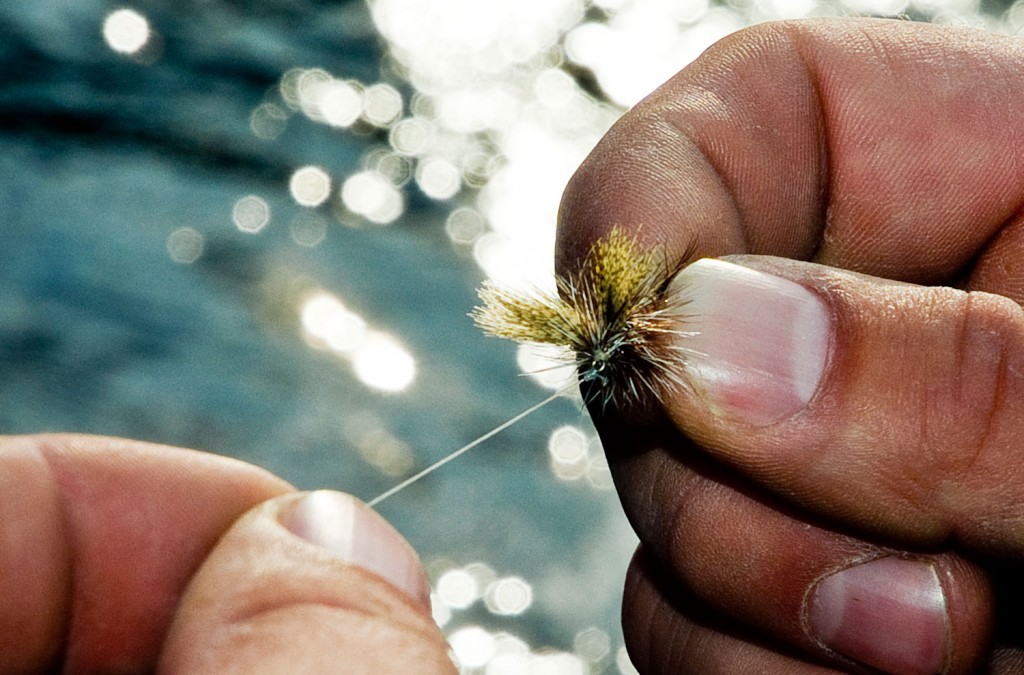Little things make a difference.
When you watch a really good fisherman you notice a lot of those little things, the details that add up to kicking ass on the water. My friend Will Sands is like that. One of those super technical fisherman who has thought through the smallest details.
I’ve always liked the way Will ties a clinch knot. The first time I saw him do it, it was so fast it looked like magic. In a day of fishing to picky trout where you change flies a lot I wouldn’t be surprises if it added up to an extra thirty minutes of fishing, and Will can catch a lot of fish in thirty minutes.


great quick tip. I find myself trying too hard to conserve tippet and spending too much time tying on flies. I will definitely put this tip into practice.
Thanks, you just taught an old dog a new trick.
Thanks Louis and Will. There are literally dozens of little things I have gleaned over the years that save time and avoid pitfalls, and I appreciate every specialized technique that I can learn.
This makes tying up extra dropper rigs in advance less necessary as a time saver, which simplifies storage of flies.
I assume the improved clinch can be tied using a modified version of this technique. I will give it a try. My question is, is it worth it to take the extra step for an improved clinch?
I had the same question re: whether adding the extra step for the improved clinch is advisable.
get tip sure it will help with my aging eyes thanks
Genius!
Try a Double-Davy knot. Faster, stronger, and much smaller footprint.
Do the same thing with your hemostats and it is very easy to then push the tag end through the correct place to make and improved clinch knot. A much better knot in my opinion.
Great tip on doing the knot but why litter the river with your clipped mono line?
Here in Australia we can use that methodology, thanks for sharing
cheers
Just yesterday I was re-rigging while my buddy was hooking up left and right – I thought to myself…there’s got to be a faster way. Awesome thanks a lot for posting this, please keep little productivity tips like this coming along!
-Kyle
Davy knots also save a lot of time and most importantly tippet.
Another good trick for a clinch is to spin the tippet opposing directions with your fingers and it wraps itself.
Also for tying a dropper with a tag, make a 12″ loop with a triple surgeons then cut one side of the loop at 4″ for the tag, the other side of the loop ends at 20″.
Surgeons are done easier if you use this method of spinning the loop with your finger and pulling through once.
Hope that helps some folks.
That is awesome! It just saved me alot of time, now even though I’m an amateur I might be able to not have to use my knot tool all the time.
Love this, reminds me of my favorite knot: seaguar, soooo fast and so strong.
Sadly I have scratched the clinch, smaller knots on floro on gin clear streams make greenbacks more interested on dries 🙂 I use Davy or uni now given knot strength and low profile, use hermostat
i didn’t realize this was a new trick. I’ve been tying that way forever. In any case I’m glad it’s out there now. I can’t imagine trying to wrap the tag end, ugh. How did you folks do that? 🙂 Thanks for the post. I’m loving G&G.
Pingback: Tippets: Tying a Clinch Knot, Literary Treasures, Support Wild Fish in Washington | MidCurrent
An old trick and a lot easier with forceps–especially when your hands are dry and chapped after hours on the water. Grab the tag end and pull it through with the forceps tip, moisten twists, and snug it tight.